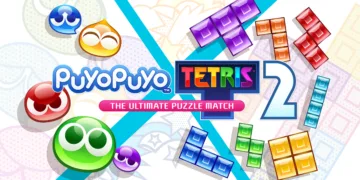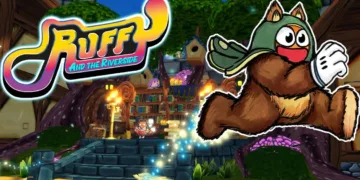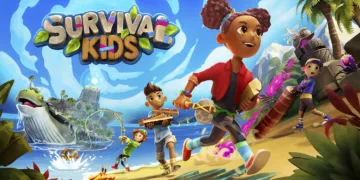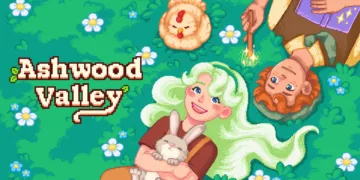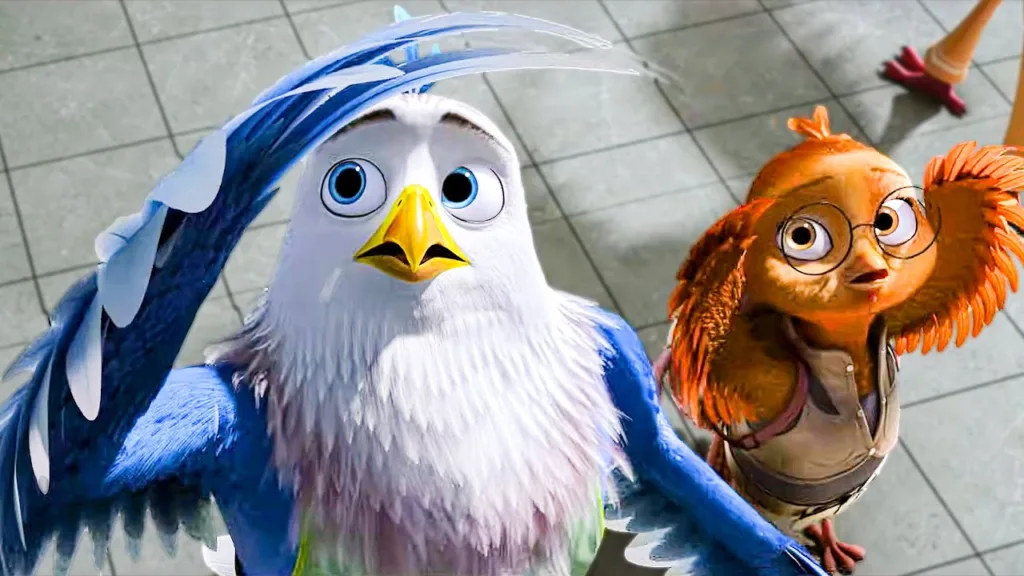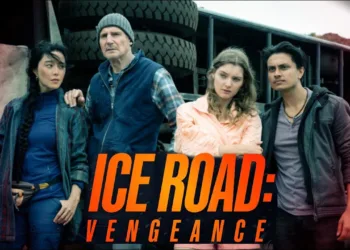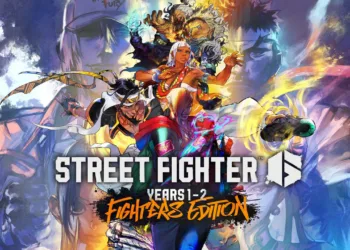Goldbeak arrives as a Chinese computer-animated family film that tackles the well-worn “fish out of water” narrative through the lens of an orphaned eagle raised among chickens. Directed by Dong Long and Nigel W. Tierney, this lesser-known animated feature brings together a voice cast including David Henrie as the titular character, Valkyrae as his inventive sister Ratchet, and veteran voice actors Debra Wilson, Mick Wingert, and Crispin Freeman.
The premise sets up a classic tale of identity and belonging: a young eagle who has never learned to fly must discover his true heritage while navigating the gap between his adoptive chicken family and his biological legacy as the son of a prominent political figure. Aimed squarely at families with young children, Goldbeak enters a crowded field of animated features exploring themes of self-discovery and acceptance, carrying both the weight of expectation and the challenge of distinguishing itself from countless similar stories.
The Narrative Arc: Predictable Yet Heartfelt
The film opens with a surprisingly dark moment—a plane crash that kills Mayor Silverwing and his family, leaving only baby Goldbeak to survive. This tragic beginning establishes the emotional stakes early, creating sympathy for our protagonist before transitioning into his life among the chickens of Peckington Roost. Here, Goldbeak lives with his adoptive mother Biddy, Uncle Shanks, and sister Ratchet, struggling with his inability to fit in and his yearning to soar.
The character development follows predictable beats, but the emotional core remains authentic. Goldbeak’s journey from insecure outsider to confident leader hits familiar notes, yet his relationship with Ratchet provides genuine warmth. She serves as both comedic relief and emotional anchor, her role as an inventor adding practical dynamics to their sibling bond. Their interactions feel natural, grounded in mutual support rather than manufactured conflict.
The supporting cast adds texture to the world. Uncle Shanks delivers humor and wisdom in measured doses, while Guy’s transformation from rival to ally provides some of the film’s most engaging character work. The villain’s scheme—a power-hungry plot threatening the bird community—follows expected patterns, but the political backdrop adds layers to Goldbeak’s personal journey.
However, the film struggles with pacing. Action sequences feel rushed, lacking the breathing room needed for emotional impact. The ending arrives abruptly, leaving storylines hanging and character arcs feeling incomplete. These structural issues prevent the narrative from achieving the emotional resonance it clearly seeks.
Visual Flight: Grounded by Budget Constraints
The animation quality reveals the film’s modest production scale. Character designs lean toward the basic and rudimentary, lacking the polish and expressiveness that define major studio productions. The flight sequences, which should serve as the film’s visual centerpiece, feel flat and weightless, missing the sense of wonder that makes airborne scenes memorable in films like How to Train Your Dragon or Kiki’s Delivery Service.
Yet Goldbeak succeeds in specific visual areas. Avian City bursts with imaginative design elements, blending futuristic and fantastical architecture to create a vibrant, lived-in world. The color palette remains bright and appealing to young audiences, while the texture and lighting work in urban environments shows technical competence within budget constraints.
The animation serves the story adequately without elevating it. Flight scenes lack the physics and emotional weight that would make them soar, while character animation remains functional rather than expressive. This creates a disconnect between the film’s ambitious themes and its visual execution, leaving viewers wanting more dynamism in key moments.
Still, the technical achievement deserves recognition considering the production scale. The filmmakers created a visually coherent world that supports the narrative, even if it doesn’t achieve the visual magic of higher-budget competitors.
Thematic Depth: Simple Messages, Genuine Heart
Goldbeak’s thematic foundation rests on identity, belonging, and the bonds that define family. The film explores how adoptive relationships can be just as meaningful as biological ones, giving weight to Goldbeak’s connection with his chicken family even as he discovers his eagle heritage. This dual identity creates authentic emotional tension without demonizing either side of his background.
The environmental and leadership messages weave naturally into the narrative. The villain’s unchecked ambition serves as a cautionary tale about power without empathy, while Goldbeak’s growth as a leader emphasizes responsibility alongside strength. These themes resonate particularly well with young audiences, offering clear moral lessons without heavy-handed preaching.
The film’s treatment of family relationships feels sincere. Conversations between Goldbeak and his adoptive mother carry genuine warmth, while his reconciliation with Ratchet provides emotional payoff. These moments ground the story in recognizable human experiences despite the avian setting.
For its target audience, Goldbeak succeeds in delivering age-appropriate content with positive messages. The mild violence relies on slapstick rather than genuine threat, while the clean language and wholesome themes make it suitable for young viewers. The educational value lies in its exploration of identity and acceptance, teaching children about embracing differences while honoring family bonds.
The film’s charm lies in its sincerity. Despite predictable plotting and modest production values, Goldbeak maintains genuine heart. It may not achieve the grandeur of major animated features, but it offers a warm, visually rich experience that connects with viewers through relatable themes and authentic emotional moments. For families seeking an animated adventure with humor, heart, and positive messages, Goldbeak provides a worthwhile watch that reminds us that stories of self-discovery have universal appeal.
The animated movie “Goldbeak” was released on digital platforms on January 28, 2025. It is an action-adventure family film about a young eagle raised by chickens who goes on a journey to discover his true identity. You can rent or purchase “Goldbeak” on various streaming services, including Amazon Prime Video, Apple TV, Google Play, and YouTube.
Full Credits
Director: Dong Long, Nigel W. Tierney
Writers: Robert N. Skir, Jeff Sloniker, Vivian Yoon
Producers: Nigel W. Tierney
Cast: Ryan Andes, Francisco Carrillo, Sungwon Cho, Crispin Freeman, Stephen Fu, David Henrie, Sean Kenin, Barrett Leddy, Kyle McCarley, Jairo Orozco, Lisa Ortiz, Jas Patrick, Bryan Rojo, Erica Schroeder, André Sogliuzzo, Marc Thompson, Valkyrae, Debra Wilson, Mick Wingert
Editors: Yiding Ma
The Review
Goldbeak
Goldbeak is a modest but heartfelt animated film that succeeds through emotional sincerity rather than technical brilliance. While it follows predictable narrative beats and suffers from budget constraints, the genuine character relationships and positive themes make it a solid choice for family viewing. The film's greatest strength lies in its authentic portrayal of family bonds and identity struggles, even if the execution doesn't quite match its ambitions.
PROS
- Authentic sibling relationship between Goldbeak and Ratchet
- Imaginative design of Avian City
- Positive messages about identity and belonging
- Age-appropriate content for young audiences
- Sincere emotional moments
CONS
- Predictable plot progression
- Basic character animation
- Rushed pacing in action sequences
- Flat flight sequences lacking wonder
- Abrupt ending





























